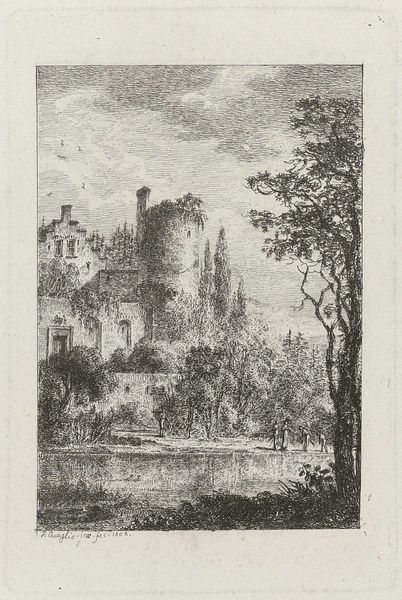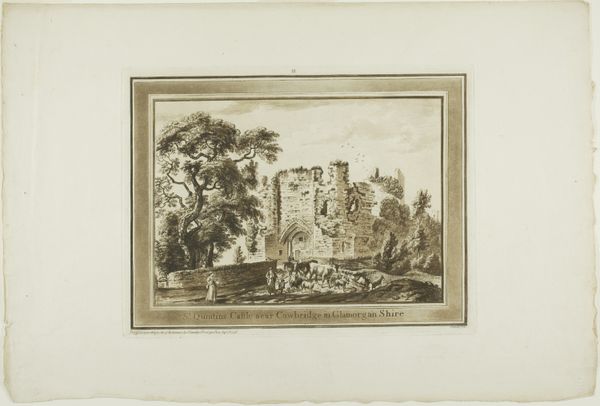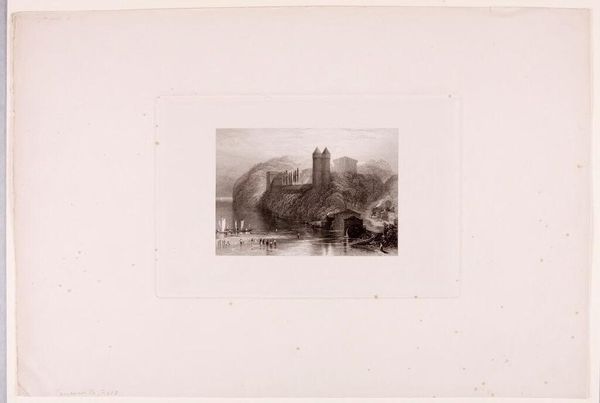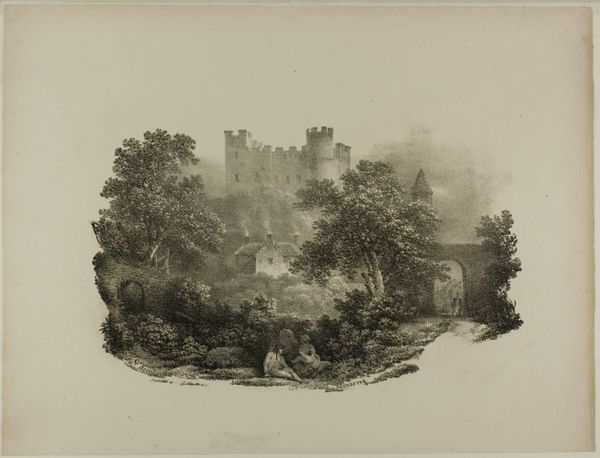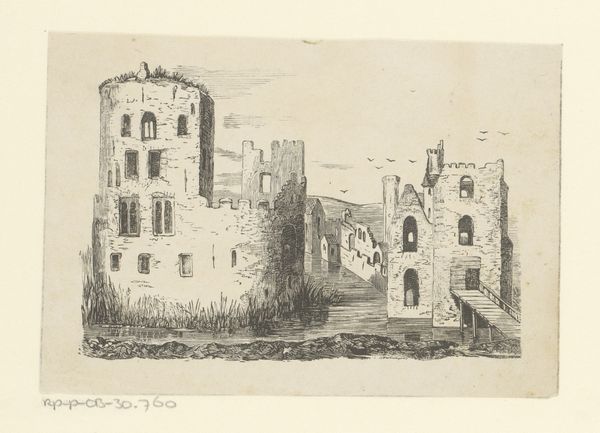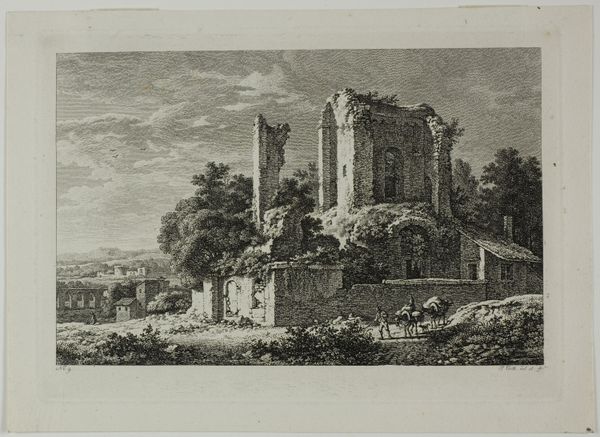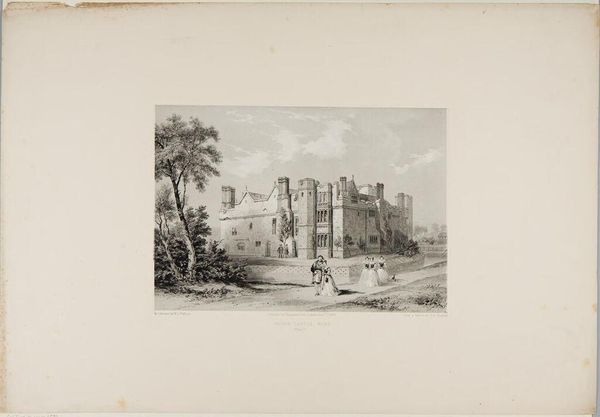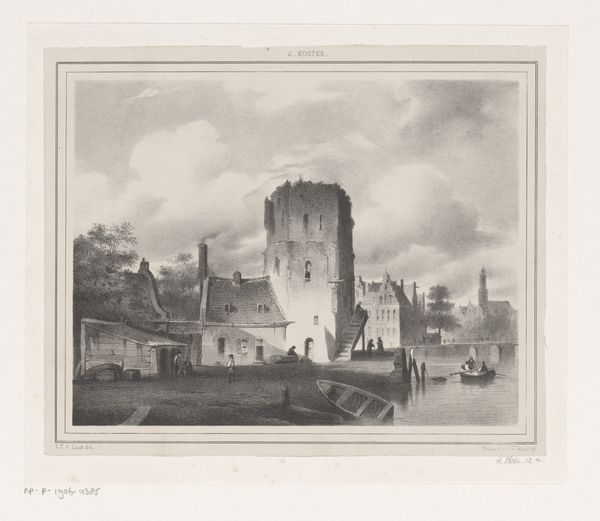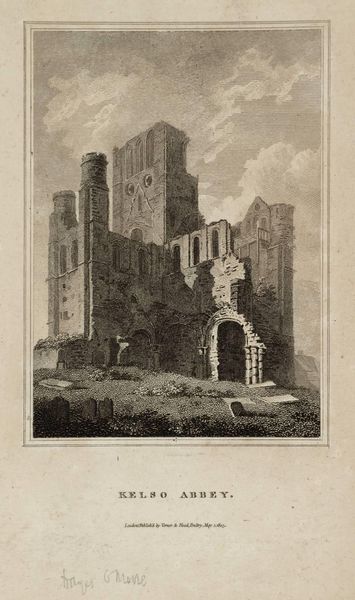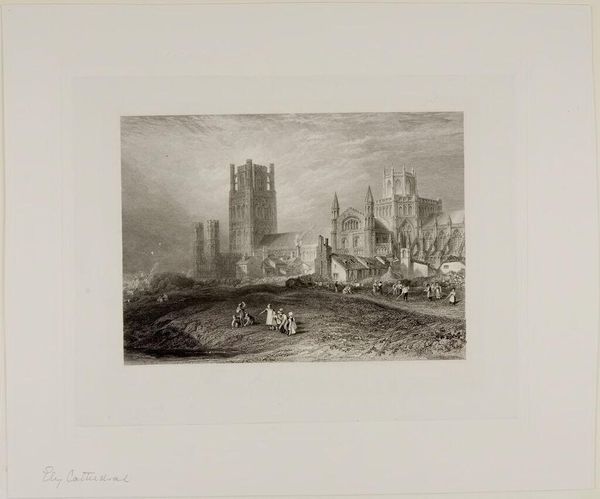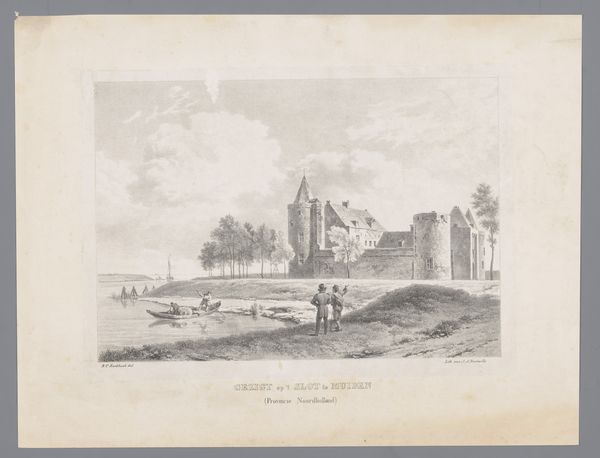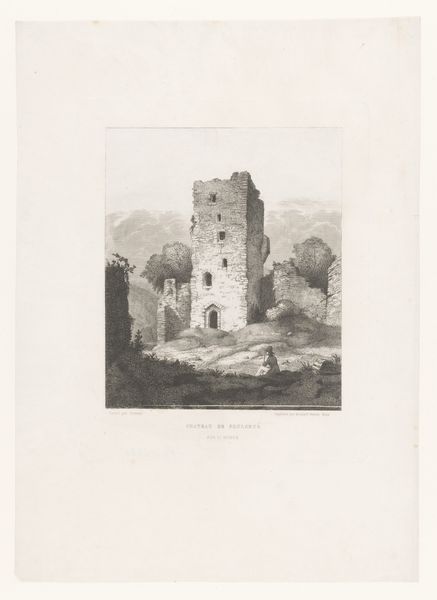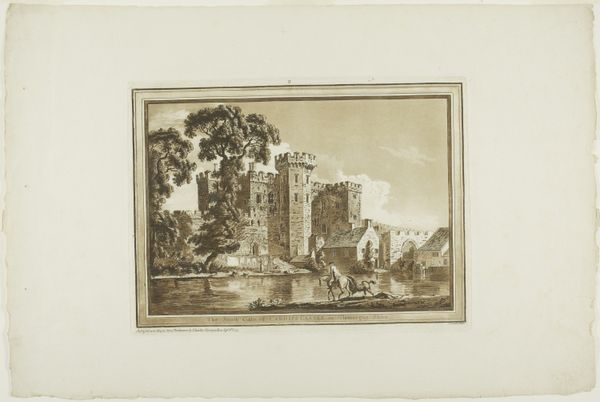
drawing, print, pencil, woodcut, wood-engraving
#
drawing
# print
#
landscape
#
charcoal drawing
#
pencil drawing
#
pencil
#
woodcut
#
united-states
#
wood-engraving
#
realism
Dimensions: 7 7/16 x 5 1/4 in. (18.89 x 13.34 cm) (image)11 7/16 x 9 1/4 in. (29.05 x 23.5 cm) (sheet)
Copyright: No Copyright - United States
Curator: Timothy Cole's wood-engraving, "Afternoon," created around 1895, depicts a placid landscape featuring a grand estate house. What strikes you most upon viewing it? Editor: Immediately, the subdued tonality evokes a certain tranquility. The graded shading, especially in the sky, contributes to the atmosphere of peaceful reflection. It makes one consider its symbolism. Curator: The composition employs a strong contrast between the imposing architecture and the figures in the foreground, creating an intriguing interplay between power structures and ordinary people of the era. Cole masterfully directs the viewer’s gaze. Editor: From my perspective, I am fascinated by the technical virtuosity of the engraving. Look at the delicate rendering of light and shadow achieved purely through linear marks. The precision required for such intricate detail is exceptional. I’d argue this technique, born from industrial revolution and advances in mechanical reproduction, democratizes images, allowing distribution of affordable art to the masses. Curator: Your emphasis on production's potential to disseminate the work aligns with this particular work's origin. This work first appeared in "The Century Magazine." Editor: Fascinating. By reproducing works by modern American masters, illustrated periodicals opened venues to disseminate these works for larger consumption, further contributing to the discussion of the democratization of art and ideas. But it must be stated that its context as illustration demands clarity, as the content addresses themes related to a place and its cultural connotations. Curator: And there lies a fascinating contradiction, doesn’t it? The work speaks to elitism, rendered in accessible means. Is that the heart of the work’s narrative power? Editor: It's an important contradiction. To be present in a realist rendering of this location can offer social access in the imaginary world. Perhaps Timothy Cole, a white Anglo-Saxon Protestant name if ever there was one, can only produce such work in a context privileging that subjecthood. Curator: An astute observation, reflecting on our modern sensibilities. It forces me to see the class dynamics encoded in the print with renewed interest. Thank you. Editor: Indeed. Thank you. Contemplating its impact encourages further consideration about its intended audience in relation to modern day's encounter.
Comments
No comments
Be the first to comment and join the conversation on the ultimate creative platform.
